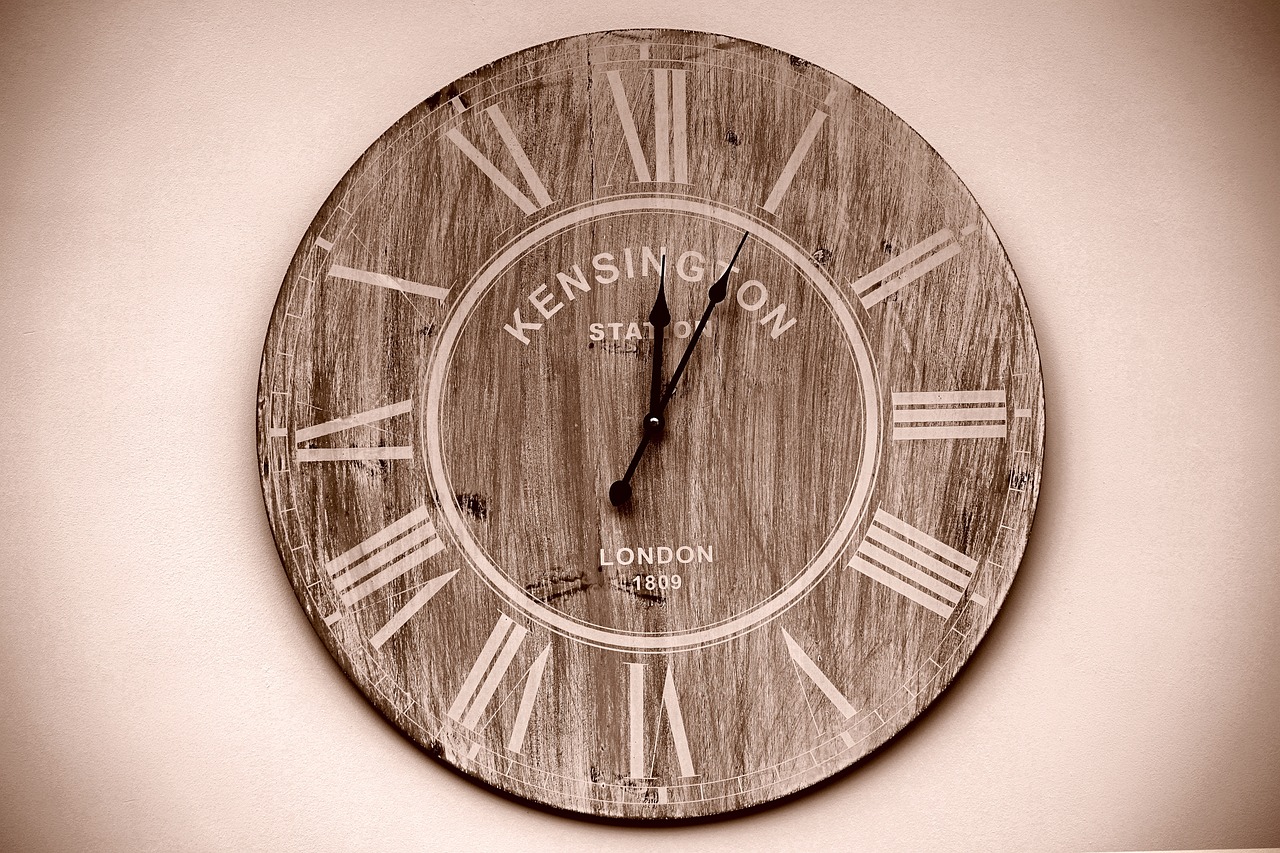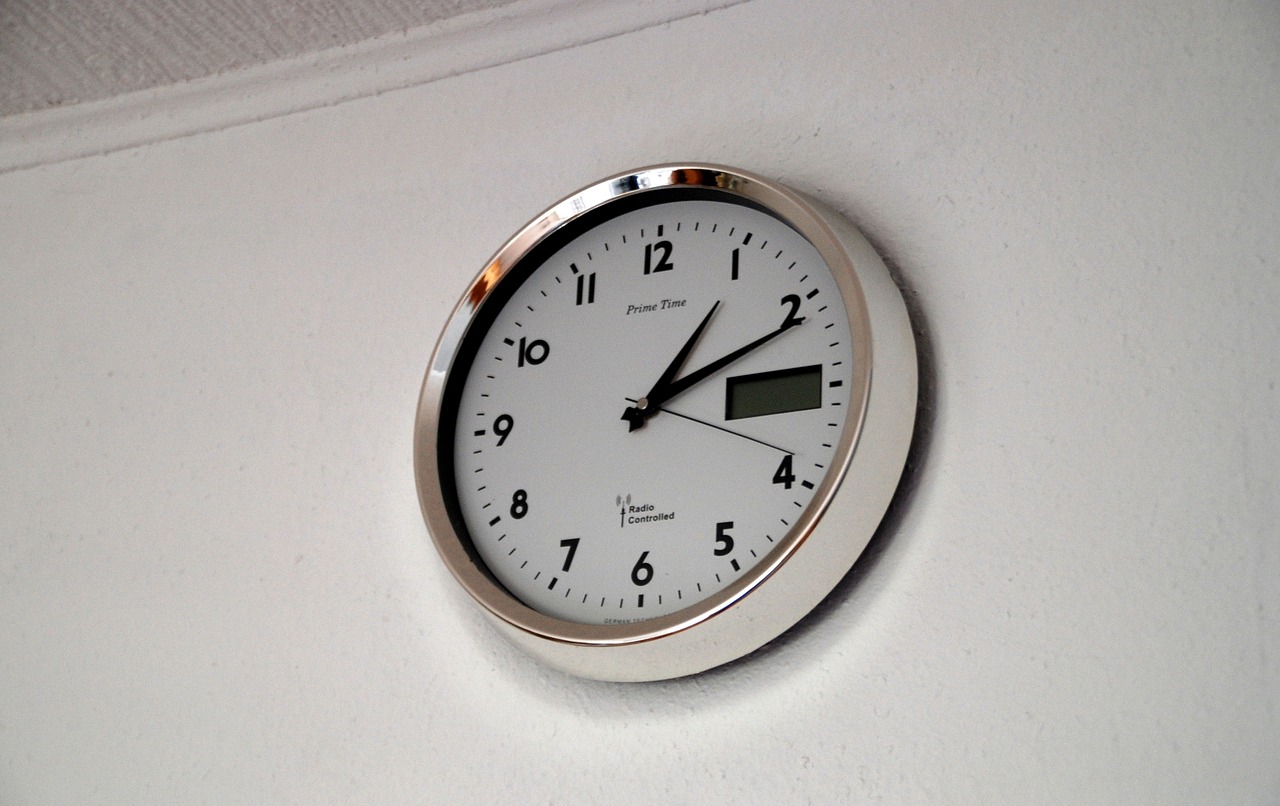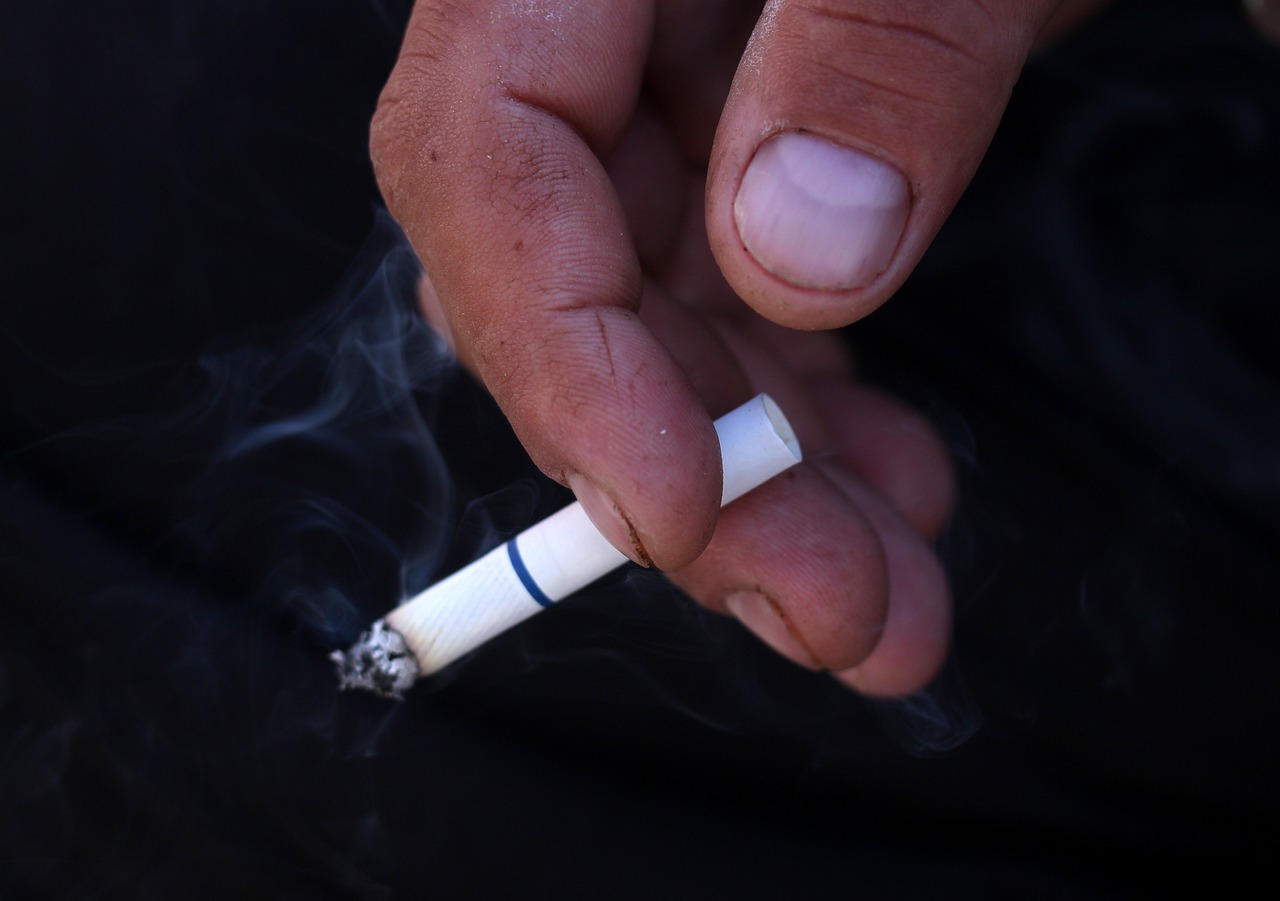The Hazards of Second-Hand Smoke in Homes
This article explores the dangers of second-hand smoke exposure in residential settings, its health implications, and effective strategies for reducing risks to ensure a healthier living environment for all household members.
Second-hand smoke consists of the smoke emitted from burning tobacco products and the smoke exhaled by smokers. It contains thousands of harmful chemicals that pose serious health risks to non-smokers, especially children and pets. When someone lights up a cigarette, the smoke that fills the air is not just a nuisance; it's a toxic cocktail of over 7,000 chemicals, many of which are known to be harmful. Imagine sitting in a room where someone is smoking – not only are you inhaling the smoke directly, but you're also surrounded by invisible particles that linger in the air long after the smoker has extinguished their cigarette. This makes understanding the implications of second-hand smoke crucial for everyone.
Adults exposed to second-hand smoke are at an increased risk of developing respiratory diseases, cardiovascular issues, and various cancers. It's alarming to think that simply sharing a space with a smoker can have such profound effects on your health. The World Health Organization has reported that there is no safe level of exposure to second-hand smoke. This means that even a whiff of smoke can be detrimental. Understanding these risks is crucial for making informed decisions about smoking in shared spaces. If you live with a smoker or visit places where smoking is allowed, you might be unknowingly putting your health on the line.
Second-hand smoke can aggravate asthma and lead to chronic obstructive pulmonary disease (COPD) in adults. If you or someone you love suffers from asthma, you know how crucial it is to avoid triggers. Exposure to second-hand smoke can make breathing a struggle, leading to increased use of inhalers and emergency visits. Recognizing these effects can motivate individuals to seek smoke-free environments for better respiratory health. It’s like trying to breathe in a room filled with dust; the more dust there is, the harder it is to get a clean breath.
Common symptoms of second-hand smoke exposure include coughing, wheezing, and shortness of breath. If you find yourself frequently coughing or feeling tightness in your chest after being around smokers, it’s time to take notice. Awareness of these signs can help individuals take action to minimize their exposure. It’s not just about feeling uncomfortable; these symptoms can escalate into more serious health issues if ignored. If your body is sending you signals, it’s wise to listen.
Long-term exposure to second-hand smoke can lead to severe health conditions, including lung cancer and heart disease. The statistics are staggering; according to the CDC, non-smokers who are regularly exposed to second-hand smoke are 25-30% more likely to develop heart disease. Understanding these risks emphasizes the importance of creating smoke-free homes. It’s similar to living near a factory that emits harmful pollutants – over time, the effects accumulate, and the damage becomes irreversible.
Children are particularly vulnerable to the dangers of second-hand smoke, which can lead to developmental issues, asthma, and sudden infant death syndrome (SIDS). Protecting children from exposure is paramount for their health. Their little lungs are still developing, and exposure to harmful chemicals can have lifelong consequences. Imagine a child growing up in a smoke-filled environment; it’s like planting a seed in toxic soil – it may grow, but it will never thrive. Ensuring a smoke-free home is not just a choice; it’s a necessity for the well-being of our future generations.
Implementing a smoke-free policy in the home is essential for safeguarding the health of all occupants. Strategies include establishing designated smoking areas outside and educating family members about the risks. It’s important to create a supportive environment where everyone understands the dangers of smoking. After all, a smoke-free home is a healthy home. Think of it as a sanctuary where fresh air reigns supreme and every breath taken is a step toward better health.
Open discussions about the dangers of smoking can help family members understand the importance of a smoke-free environment. Encouraging dialogue can foster a supportive atmosphere for those looking to quit smoking. It’s like having a team working towards a common goal; when everyone is on the same page, the chances of success increase. Share information, express concerns, and celebrate small victories together. Communication is key!
Various resources, including support groups and cessation programs, are available to assist individuals in quitting smoking. Utilizing these resources can significantly reduce second-hand smoke exposure in the home. From hotlines to local support groups, there’s a wealth of help out there. It’s like having a map when you’re lost; it guides you toward a healthier path. Encourage your loved ones to take advantage of these resources – their health depends on it!
Raising awareness about the hazards of second-hand smoke is vital for protecting the health of all household members. By implementing smoke-free policies and promoting education, families can create safer living environments. Remember, knowledge is power. The more we talk about the dangers of second-hand smoke, the more we can protect ourselves and our loved ones. Let’s make our homes a haven of health!
- What is second-hand smoke? Second-hand smoke is the combination of smoke from the burning end of a cigarette and the smoke exhaled by the smoker.
- What are the health risks of second-hand smoke? Exposure can lead to respiratory diseases, cardiovascular issues, and various cancers.
- How can I create a smoke-free home? Establish smoke-free policies, communicate openly about the risks, and encourage family members to quit smoking.
- Are children more affected by second-hand smoke? Yes, children are particularly vulnerable and can suffer from developmental issues and asthma due to exposure.

Understanding Second-Hand Smoke
This article explores the dangers of second-hand smoke exposure in residential settings, its health implications, and effective strategies for reducing risks to ensure a healthier living environment for all household members.
Second-hand smoke, often referred to as environmental tobacco smoke (ETS), is a toxic mixture that arises from burning tobacco products and the smoke that is exhaled by smokers. This hazardous substance is not just an inconvenience; it is a serious health threat that contains over 7,000 chemicals, many of which are known to be harmful or potentially deadly. Among these chemicals are tar, carbon monoxide, and formaldehyde, which can linger in the air long after the smoker has left the room. Even brief exposure can pose significant health risks, particularly to vulnerable populations like children and pets.
When someone lights up a cigarette, they are not only affecting their own health but also the health of those around them. The smoke fills the air and settles on surfaces, creating a toxic environment. This is especially concerning in homes where children play and pets roam freely. Children are particularly at risk because their bodies are still developing, making them more susceptible to the harmful effects of second-hand smoke. In fact, research shows that children exposed to second-hand smoke are more likely to suffer from respiratory infections, asthma, and even sudden infant death syndrome (SIDS).
It’s crucial to understand that second-hand smoke doesn't just vanish; it can linger in the air and on surfaces for hours, if not days. This means that even if a smoker steps outside to smoke, the residue can still affect those inside the home. This phenomenon is often referred to as "third-hand smoke," and it can accumulate on furniture, walls, and clothing, posing additional health risks.
To illustrate the dangers of second-hand smoke, here’s a quick breakdown of the harmful effects it can have on different groups:
| Group Affected | Health Risks |
|---|---|
| Adults | Increased risk of heart disease, lung cancer, and respiratory illnesses. |
| Children | Higher chances of developing asthma, respiratory infections, and SIDS. |
| Pets | Higher risk of developing cancers and respiratory issues. |
Recognizing these risks is the first step toward creating a healthier living environment. Families should engage in open discussions about the dangers of second-hand smoke and consider implementing smoke-free policies within their homes. By understanding the composition and effects of second-hand smoke, individuals can make informed choices that protect their loved ones and promote a cleaner, safer atmosphere.
- What is second-hand smoke? Second-hand smoke is the combination of smoke from the burning end of a cigarette and the smoke exhaled by smokers.
- Who is most affected by second-hand smoke? Children, pregnant women, and pets are particularly vulnerable to the harmful effects of second-hand smoke.
- How can I reduce exposure to second-hand smoke at home? Implement a smoke-free policy, educate family members about the risks, and create designated smoking areas outside.

Health Risks for Adults
When it comes to second-hand smoke, the health risks for adults are nothing short of alarming. Exposure to this toxic mix of chemicals can significantly increase the likelihood of developing serious health issues. Imagine walking through a dense fog, unaware that each breath you take is filled with harmful particles. That’s what second-hand smoke does to your lungs and overall health. It's not just a nuisance; it's a silent killer lurking in your home.
One of the most concerning aspects of second-hand smoke is its impact on respiratory health. Adults who are regularly exposed may find themselves grappling with chronic conditions like asthma or chronic obstructive pulmonary disease (COPD). These conditions can make simple tasks, like climbing a flight of stairs, feel like running a marathon. The irritation from smoke can lead to persistent coughing, wheezing, and even shortness of breath, which are all signs that your body is struggling to cope with the toxic environment.
Moreover, the long-term consequences of exposure to second-hand smoke can be devastating. Research has shown that individuals who inhale second-hand smoke are at a higher risk of developing lung cancer and heart disease. In fact, studies indicate that non-smokers living with smokers are about 25-30% more likely to develop heart disease compared to those in smoke-free environments. This statistic serves as a wake-up call, highlighting the importance of understanding these risks and taking proactive measures to create a healthier living space.
To put this into perspective, consider the following table that illustrates the increased risk of various health issues associated with second-hand smoke exposure:
| Health Issue | Increased Risk |
|---|---|
| Lung Cancer | 20-30% higher risk |
| Heart Disease | 25-30% higher risk |
| Respiratory Issues | 50% more likely to develop |
It’s essential to recognize the symptoms of exposure, which can often be overlooked. Common signs include persistent coughing, wheezing, and a feeling of tightness in the chest. If you notice these symptoms in yourself or someone you love, it’s crucial to take action. Awareness is the first step in combating the dangers of second-hand smoke. By understanding the health risks, you can make informed decisions about your living environment and advocate for smoke-free spaces.
In conclusion, the health risks associated with second-hand smoke are profound and far-reaching. The impact on respiratory health, coupled with the long-term consequences like cancer and heart disease, underscores the urgent need for adults to protect themselves and their loved ones. Creating a smoke-free home isn’t just a personal choice; it’s a vital step toward ensuring a healthier future for everyone in your household.
- What is second-hand smoke? Second-hand smoke is the combination of smoke from the burning end of a cigarette and the smoke exhaled by the smoker, containing thousands of harmful chemicals.
- How can I reduce exposure to second-hand smoke at home? Implementing a strict no-smoking policy inside the home, designating outdoor smoking areas, and ensuring proper ventilation can help reduce exposure.
- Are children more affected by second-hand smoke than adults? Yes, children are particularly vulnerable to the harmful effects of second-hand smoke, which can lead to serious health issues like asthma and developmental problems.

Impact on Respiratory Health
This article explores the dangers of second-hand smoke exposure in residential settings, its health implications, and effective strategies for reducing risks to ensure a healthier living environment for all household members.
Second-hand smoke consists of the smoke emitted from burning tobacco products and the smoke exhaled by smokers. It contains thousands of harmful chemicals that pose serious health risks to non-smokers, especially children and pets.
Adults exposed to second-hand smoke are at an increased risk of developing respiratory diseases, cardiovascular issues, and various cancers. Understanding these risks is crucial for making informed decisions about smoking in shared spaces.
Second-hand smoke can significantly aggravate existing respiratory conditions and contribute to the development of new ones. For instance, individuals who already suffer from asthma may find their symptoms worsening due to the inhalation of toxic substances present in second-hand smoke. This can lead to frequent asthma attacks, which can be both distressing and dangerous. Furthermore, exposure to second-hand smoke is a known risk factor for chronic obstructive pulmonary disease (COPD), a debilitating condition that affects the lungs and makes breathing increasingly difficult.
It’s essential to recognize that the impact of second-hand smoke on respiratory health is not limited to those who smoke actively. Non-smokers, including children and pets, can suffer severe consequences as well. The harmful chemicals in second-hand smoke can linger in the air and settle on surfaces, creating an environment that is detrimental to lung health. This is particularly concerning in homes where children play and pets roam freely.
To illustrate the severity of the issue, consider the following common respiratory symptoms associated with second-hand smoke exposure:
- Coughing
- Wheezing
- Shortness of breath
These symptoms may seem mild at first, but they can escalate into more serious health concerns if exposure continues over time. In fact, long-term exposure can lead to chronic bronchitis and even lung cancer. It’s crucial to take these risks seriously and to create smoke-free environments to protect respiratory health.
Common symptoms of second-hand smoke exposure include coughing, wheezing, and shortness of breath. Awareness of these signs can help individuals take action to minimize their exposure.
Long-term exposure to second-hand smoke can lead to severe health conditions, including lung cancer and heart disease. Understanding these risks emphasizes the importance of creating smoke-free homes.
Children are particularly vulnerable to the dangers of second-hand smoke, which can lead to developmental issues, asthma, and sudden infant death syndrome (SIDS). Protecting children from exposure is paramount for their health.
Implementing a smoke-free policy in the home is essential for safeguarding the health of all occupants. Strategies include establishing designated smoking areas outside and educating family members about the risks.
Open discussions about the dangers of smoking can help family members understand the importance of a smoke-free environment. Encouraging dialogue can foster a supportive atmosphere for those looking to quit smoking.
Various resources, including support groups and cessation programs, are available to assist individuals in quitting smoking. Utilizing these resources can significantly reduce second-hand smoke exposure in the home.
Raising awareness about the hazards of second-hand smoke is vital for protecting the health of all household members. By implementing smoke-free policies and promoting education, families can create safer living environments.
- What is second-hand smoke? Second-hand smoke is the combination of smoke from the burning end of a cigarette and the smoke exhaled by the smoker. It contains numerous harmful chemicals.
- Who is at risk from second-hand smoke? Non-smokers, especially children and pets, are at a higher risk of health problems due to second-hand smoke exposure.
- What are the health effects of second-hand smoke? Health effects include respiratory diseases, increased risk of heart disease, and various cancers.
- How can I create a smoke-free home? Establish a no-smoking policy, designate outdoor smoking areas, and educate all household members about the risks of smoking.

Symptoms of Exposure
This article explores the dangers of second-hand smoke exposure in residential settings, its health implications, and effective strategies for reducing risks to ensure a healthier living environment for all household members.
Second-hand smoke consists of the smoke emitted from burning tobacco products and the smoke exhaled by smokers. It contains thousands of harmful chemicals that pose serious health risks to non-smokers, especially children and pets.
Adults exposed to second-hand smoke are at an increased risk of developing respiratory diseases, cardiovascular issues, and various cancers. Understanding these risks is crucial for making informed decisions about smoking in shared spaces.
Second-hand smoke can aggravate asthma and lead to chronic obstructive pulmonary disease (COPD) in adults. Recognizing these effects can motivate individuals to seek smoke-free environments for better respiratory health.
Common symptoms of second-hand smoke exposure can manifest in various ways, often resembling those of typical respiratory issues. Individuals may experience:
- Coughing: A persistent cough that seems to linger can be a direct response to inhaling smoke particles.
- Wheezing: This high-pitched sound during breathing can indicate irritation in the airways.
- Shortness of Breath: Feeling breathless or having difficulty catching your breath is a serious sign that should not be ignored.
Being aware of these symptoms is essential, as they can serve as early warning signs of more severe health issues. If you or someone in your household experiences these symptoms regularly, it may be time to assess the smoking habits in your environment and consider taking action to reduce exposure.
Long-term exposure to second-hand smoke can lead to severe health conditions, including lung cancer and heart disease. Understanding these risks emphasizes the importance of creating smoke-free homes.
Children are particularly vulnerable to the dangers of second-hand smoke, which can lead to developmental issues, asthma, and sudden infant death syndrome (SIDS). Protecting children from exposure is paramount for their health.
Implementing a smoke-free policy in the home is essential for safeguarding the health of all occupants. Strategies include establishing designated smoking areas outside and educating family members about the risks.
Open discussions about the dangers of smoking can help family members understand the importance of a smoke-free environment. Encouraging dialogue can foster a supportive atmosphere for those looking to quit smoking.
Various resources, including support groups and cessation programs, are available to assist individuals in quitting smoking. Utilizing these resources can significantly reduce second-hand smoke exposure in the home.
Raising awareness about the hazards of second-hand smoke is vital for protecting the health of all household members. By implementing smoke-free policies and promoting education, families can create safer living environments.
- What is second-hand smoke?
Second-hand smoke is the combination of smoke from the burning end of a cigarette, cigar, or pipe and the smoke exhaled by the smoker. It contains a mix of over 7,000 chemicals, many of which are toxic.
- How does second-hand smoke affect children?
Children exposed to second-hand smoke are at higher risk for respiratory infections, asthma, and even Sudden Infant Death Syndrome (SIDS).
- What can I do to reduce second-hand smoke exposure in my home?
Implementing a smoke-free policy, encouraging smokers to smoke outside, and educating family members about the dangers of smoking can significantly reduce exposure.
- Are there any resources available for quitting smoking?
Yes, numerous resources like hotlines, support groups, and cessation programs are available to help individuals quit smoking.

Long-term Consequences
Long-term exposure to second-hand smoke is not just a minor inconvenience; it can lead to severe health conditions that may drastically alter the quality of life for those affected. Imagine living in a home where the air is laden with invisible toxins, slowly eroding your health day by day. This isn't just a hypothetical scenario; it's the reality for many families who allow smoking indoors. The consequences can be dire, including increased risks of lung cancer, heart disease, and even stroke.
Research has shown that the risk of developing lung cancer increases by as much as 20-30% for non-smokers who are regularly exposed to second-hand smoke. This statistic is alarming, especially when you consider that lung cancer is one of the leading causes of cancer-related deaths worldwide. Furthermore, individuals exposed to second-hand smoke are also at a higher risk of developing cardiovascular diseases. A study indicated that non-smokers exposed to second-hand smoke have a 25-30% increased risk of heart disease compared to those who are not exposed.
But it doesn’t stop there. The long-term effects can also extend to mental health issues. The stress and anxiety associated with living in an environment filled with smoke can contribute to various psychological problems, making it essential to consider both physical and mental well-being when discussing the consequences of second-hand smoke.
To better illustrate these long-term health risks, here’s a simple table summarizing the potential conditions linked to prolonged exposure to second-hand smoke:
| Health Condition | Increased Risk |
|---|---|
| Lung Cancer | 20-30% |
| Heart Disease | 25-30% |
| Stroke | Higher likelihood |
| Chronic Respiratory Diseases | Significant increase |
Understanding these long-term consequences is crucial for families who may underestimate the risks associated with second-hand smoke. By recognizing the potential health hazards, you can take proactive steps to create a safer living environment. It’s not just about the immediate discomfort; it’s about protecting your loved ones from a future filled with health complications that could have been avoided. So, why risk it? Taking the initiative to establish a smoke-free home can significantly enhance the overall well-being of everyone involved.
- What is second-hand smoke?
Second-hand smoke is the smoke that comes from burning tobacco products or is exhaled by smokers. It contains thousands of harmful chemicals.
- How does second-hand smoke affect children?
Children are particularly vulnerable to second-hand smoke, which can lead to developmental issues, asthma, and even sudden infant death syndrome (SIDS).
- What can I do to reduce exposure to second-hand smoke at home?
Implementing a smoke-free policy, educating family members about the risks, and establishing designated smoking areas outside can help.
- Are there resources available to help someone quit smoking?
Yes, there are numerous support groups and cessation programs available that can assist individuals in quitting smoking.

Impact on Children
Children are particularly vulnerable to the dangers of second-hand smoke, and the implications can be both immediate and long-lasting. When adults smoke indoors or in close proximity to children, they expose them to a cocktail of toxic chemicals that can lead to serious health issues. This exposure is not just a minor inconvenience; it can significantly affect a child's development and overall well-being.
One of the most alarming consequences of second-hand smoke exposure in children is the increased risk of asthma. Studies have shown that children living in homes where smoking occurs are more likely to develop asthma, and if they already have it, their symptoms can worsen. This can lead to frequent hospital visits, missed school days, and a generally lower quality of life. In fact, children exposed to second-hand smoke are twice as likely to be diagnosed with asthma compared to their smoke-free peers.
Moreover, second-hand smoke has been linked to Sudden Infant Death Syndrome (SIDS), a tragic condition that affects infants during sleep. Babies who are exposed to second-hand smoke are at a higher risk of dying from SIDS, making it crucial for parents and caregivers to create a smoke-free environment during those early, formative years.
In addition to respiratory issues and SIDS, children exposed to second-hand smoke may experience developmental problems. Their cognitive abilities, including attention span and memory, can be negatively impacted, leading to challenges in school and social interactions. The long-term effects can be profound, as these children may struggle with learning disabilities and behavioral issues.
To further illustrate the risks, consider the following table that summarizes the health impacts of second-hand smoke on children:
| Health Impact | Description |
|---|---|
| Asthma | Increased risk and worsening symptoms in children exposed to smoke. |
| Sudden Infant Death Syndrome (SIDS) | Higher likelihood of SIDS in infants exposed to second-hand smoke. |
| Developmental Issues | Potential cognitive impairments and behavioral problems. |
In light of these serious implications, it's clear that protecting children from second-hand smoke is not just a matter of preference—it's a necessity. Parents and caregivers must take proactive steps to ensure a smoke-free environment, not only for the health of their children but also for their peace of mind. By creating designated outdoor smoking areas and discussing the risks associated with smoking, families can work together to minimize exposure.
- What are the immediate effects of second-hand smoke on children? Immediate effects can include coughing, wheezing, and increased respiratory infections.
- How can I protect my child from second-hand smoke? The best way to protect your child is to establish a smoke-free home and car policy, and encourage family and friends to refrain from smoking around them.
- Are there resources available for parents trying to quit smoking? Yes, many local health departments and organizations offer cessation programs and support groups specifically for parents.

Creating a Smoke-Free Home
Creating a smoke-free home is not just a trend; it’s a vital step towards ensuring the health and well-being of everyone who lives under your roof. Imagine walking into your home and breathing in fresh, clean air instead of the lingering smell of cigarettes. A smoke-free environment can significantly reduce health risks associated with second-hand smoke, making it an essential goal for families. But how do you achieve this? It begins with establishing clear policies and open communication.
First and foremost, it's crucial to set up designated smoking areas outside your home. This means that if someone in your household smokes, they should do so away from doors and windows to prevent smoke from drifting inside. You might think of this as creating a "buffer zone" where smoke can dissipate safely without affecting the indoor air quality. Additionally, consider adding comfortable seating and ashtrays in these areas to encourage compliance. It’s all about making the outdoor space inviting!
Next, education plays a significant role in this transformation. Have open discussions about the dangers of smoking and second-hand smoke exposure. This isn't just about lecturing; it's about fostering an environment where everyone feels comfortable sharing their thoughts and concerns. For instance, you could share statistics or personal stories that highlight the health risks associated with smoking. Engaging family members in this conversation can create a sense of unity and purpose, making them more likely to support a smoke-free lifestyle.
Moreover, consider utilizing various resources available to help those who smoke quit. Support groups, counseling services, and cessation programs can provide the necessary tools and encouragement for individuals looking to kick the habit. You might even want to create a small resource center in your home, filled with pamphlets, contact information for local support groups, and motivational materials. This can serve as a constant reminder of the commitment to a healthier living space.
Lastly, it’s essential to lead by example. If you’re a non-smoker, make your stance clear and encourage healthy habits within your household. Celebrate milestones when family members take steps towards quitting or reducing their smoking. This could be as simple as acknowledging a smoke-free week with a family dinner or a fun outing. Remember, creating a smoke-free home is a journey that requires patience, understanding, and support from everyone involved.
Here are some common questions about creating a smoke-free home:
- What are the first steps to take in creating a smoke-free home? Start by establishing clear rules about smoking inside the home and designate outdoor areas for smoking.
- How can I encourage family members to quit smoking? Open discussions about the risks of smoking, provide resources for quitting, and offer your support throughout their journey.
- What should I do if a guest smokes in my home? Politely ask them to smoke outside and explain your smoke-free policy.
- Are there any health benefits to having a smoke-free home? Absolutely! A smoke-free environment reduces the risk of respiratory issues, cardiovascular diseases, and other health problems for all household members.

Effective Communication Strategies
When it comes to creating a smoke-free home, effective communication is the key to success. It's not just about stating the rules; it's about fostering an environment where everyone feels comfortable discussing their thoughts and concerns about smoking. Have you ever tried to talk to a friend about a sensitive topic, only to feel like you were walking on eggshells? That's why establishing an open dialogue is crucial. It allows family members to express their feelings and understand the importance of maintaining a smoke-free environment.
One of the most effective strategies is to initiate conversations during family gatherings or casual moments. This creates a relaxed atmosphere where everyone can share their opinions without feeling pressured. You might say something like, "I've been reading about the dangers of second-hand smoke, and I think it’s important for us to talk about how we can keep our home healthy." This approach not only highlights your concern but also invites others to share their thoughts.
Additionally, consider using visual aids to help convey the message. For instance, you could create a small poster or infographic that outlines the health risks associated with second-hand smoke. Displaying this in common areas can spark conversations and serve as a reminder of why a smoke-free home is essential. Sometimes, seeing the facts laid out can have a more profound impact than just hearing about them.
Moreover, it’s important to recognize that communication is a two-way street. Encourage family members to voice their feelings about smoking and its effects. This can be particularly effective for those who smoke, as it allows them to express their struggles and seek support. You might be surprised at how willing they are to change when they feel understood and supported.
Lastly, remember that change takes time. It's essential to be patient and persistent. If a family member is resistant to the idea of quitting smoking or creating a smoke-free space, don't give up on having these conversations. Instead, continue to approach the topic with empathy and understanding. You could even suggest setting small goals together, like designating certain areas of the house as smoke-free zones initially, and then gradually expanding those areas. This gradual approach can make the transition feel less daunting.
- What is second-hand smoke?
Second-hand smoke is the combination of smoke exhaled by a smoker and the smoke from the burning end of a tobacco product. It contains harmful chemicals that can affect non-smokers.
- How does second-hand smoke affect children?
Children are especially vulnerable to second-hand smoke, which can lead to serious health issues such as asthma, developmental problems, and even sudden infant death syndrome (SIDS).
- What are some ways to create a smoke-free home?
Implementing a smoke-free policy, establishing designated smoking areas outside, and having open discussions about the dangers of smoking are effective strategies.
- Are there resources available for quitting smoking?
Yes, there are numerous resources available, including support groups, counseling, and cessation programs that can help individuals quit smoking.

Resources for Quitting Smoking
Quitting smoking is one of the most significant steps a person can take towards improving their health and the health of those around them. Fortunately, there are numerous resources available to help individuals on this challenging journey. From support groups to digital apps, the options are plentiful and varied.
One effective resource is support groups, which provide a platform for individuals to share their experiences, challenges, and triumphs. These groups foster a sense of community and accountability, making the quitting process feel less isolating. Many local health organizations and hospitals offer free or low-cost support groups, both in-person and online, allowing participants to choose what works best for them.
Another invaluable resource is cessation programs, which often include counseling and may provide medications to ease withdrawal symptoms. Programs like the American Lung Association's Freedom From Smoking or the CDC's Tips From Former Smokers offer structured plans to help individuals quit smoking successfully. These programs typically combine educational materials with motivational support, making them highly effective.
For those who prefer a more personal approach, one-on-one counseling can be extremely beneficial. Speaking with a healthcare provider or a trained counselor can provide tailored strategies and encouragement. They can also prescribe medications like nicotine replacement therapies (patches, gums, lozenges) or non-nicotine medications that help reduce cravings.
In today’s digital age, there are also a plethora of mobile apps designed to assist individuals in quitting smoking. These apps often provide daily motivational messages, track progress, and offer tips on managing cravings. Some popular apps include QuitNow!, Smoke Free, and My QuitBuddy. Users can find a sense of achievement by visualizing their progress and the money saved by not smoking.
Lastly, hotlines such as the National Quitline (1-800-QUIT-NOW) offer immediate support and guidance. Trained counselors are available to provide information, resources, and encouragement 24/7, making it easier for individuals to reach out for help whenever they need it.
By utilizing these resources, individuals can significantly enhance their chances of quitting smoking for good. It’s important to remember that quitting is a process, and seeking help is a sign of strength, not weakness. Whether through community support, professional programs, or digital tools, the journey to a smoke-free life is within reach.
Q: What is the best way to quit smoking?
A: The best way to quit smoking varies for each person. It often involves a combination of support groups, cessation programs, and possibly medications. Finding what works for you is key.
Q: How long does it take to quit smoking?
A: The timeline for quitting smoking can differ widely. Some people may quit immediately, while others may take several attempts over time. It’s important to stay committed and seek support.
Q: Can I quit smoking without help?
A: Yes, some individuals successfully quit smoking on their own, but having support can significantly increase your chances of success. Consider using apps or online resources if you choose to go solo.
Q: What are the first steps I should take to quit smoking?
A: Start by setting a quit date, informing friends and family of your decision, and identifying triggers. Consider joining a support group or consulting a healthcare provider for additional strategies.

Conclusion: The Importance of Awareness
Understanding the hazards of second-hand smoke is crucial for maintaining a healthy home environment. It’s not just about the smoker; it’s about everyone who shares that space. The implications of second-hand smoke exposure can be devastating, especially for vulnerable populations such as children and pets. By raising awareness about these dangers, we can empower families to take action and create a safer living space.
Implementing smoke-free policies in the home is a significant step towards protecting the health of all household members. It’s essential to recognize that second-hand smoke is not just a nuisance; it’s a serious health risk that can lead to long-term consequences. Families can significantly reduce these risks by fostering open conversations about the dangers of smoking and encouraging supportive discussions about quitting.
Moreover, utilizing available resources for quitting smoking can be a game-changer. Support groups, cessation programs, and educational materials can provide the necessary tools for individuals looking to quit. When families work together to eliminate second-hand smoke, they not only safeguard their health but also promote a culture of wellness and care.
In conclusion, awareness is the first step towards action. By understanding the risks associated with second-hand smoke and committing to smoke-free environments, families can protect their loved ones and contribute to a healthier community. Let’s take the initiative to educate ourselves and others, ensuring that our homes remain sanctuaries free from the dangers of tobacco smoke.
- What is second-hand smoke? Second-hand smoke is the smoke that comes from burning tobacco products and the smoke that is exhaled by smokers. It contains harmful chemicals that can affect non-smokers.
- Who is most affected by second-hand smoke? Children, pregnant women, and pets are particularly vulnerable to the dangers of second-hand smoke, as their bodies are still developing or they have different sensitivities.
- How can I create a smoke-free home? Establish clear rules about smoking inside the home, designate outdoor smoking areas, and communicate the risks of exposure to all family members.
- What resources are available for quitting smoking? There are numerous resources, including hotlines, websites, and local support groups that provide assistance to individuals looking to quit smoking.
- What are the long-term health effects of second-hand smoke exposure? Long-term exposure can lead to serious health issues such as lung cancer, heart disease, and respiratory problems.
Frequently Asked Questions
- What is second-hand smoke?
Second-hand smoke is the combination of smoke emitted from burning tobacco products and the smoke exhaled by smokers. It contains thousands of harmful chemicals that can pose serious health risks to non-smokers, particularly vulnerable groups like children and pets.
- What are the health risks associated with second-hand smoke for adults?
Adults exposed to second-hand smoke are at a higher risk of developing respiratory diseases, cardiovascular problems, and various types of cancer. It's crucial to understand these risks to make informed decisions about smoking in shared spaces.
- How does second-hand smoke affect children?
Children are especially at risk from second-hand smoke exposure, which can lead to developmental issues, asthma, and even sudden infant death syndrome (SIDS). Protecting children from such exposure is essential for their overall health and well-being.
- What symptoms indicate exposure to second-hand smoke?
Common symptoms of second-hand smoke exposure include coughing, wheezing, and shortness of breath. Being aware of these signs can help individuals take proactive measures to reduce their exposure.
- What steps can I take to create a smoke-free home?
Establishing a smoke-free policy in your home is vital. This can include designating smoking areas outside, educating family members about the risks of smoking, and fostering open discussions about the importance of a smoke-free environment.
- Are there resources available for quitting smoking?
Yes! There are numerous resources available, including support groups and cessation programs, that can help individuals quit smoking. Utilizing these resources can significantly reduce second-hand smoke exposure in your home.
- What long-term consequences can result from exposure to second-hand smoke?
Long-term exposure to second-hand smoke can lead to severe health conditions, including lung cancer and heart disease. Understanding these risks highlights the importance of creating smoke-free homes for the health of all occupants.



















